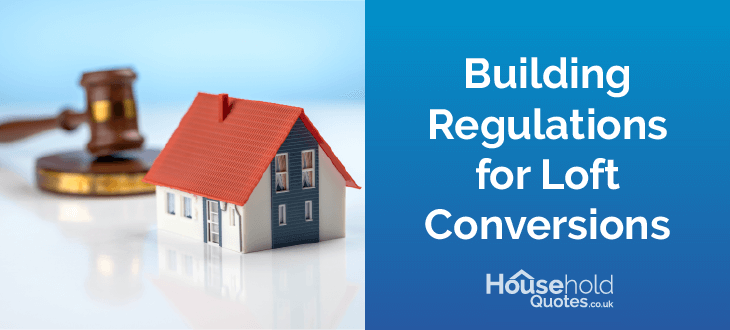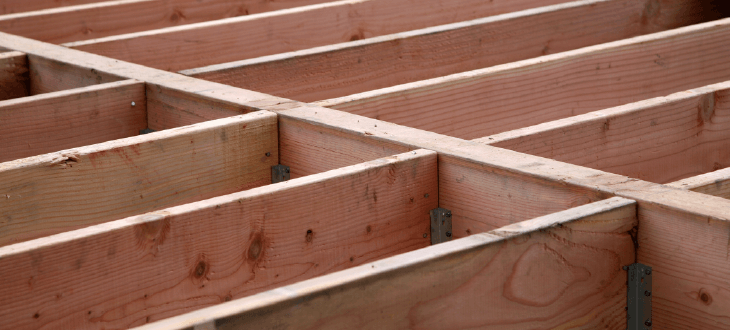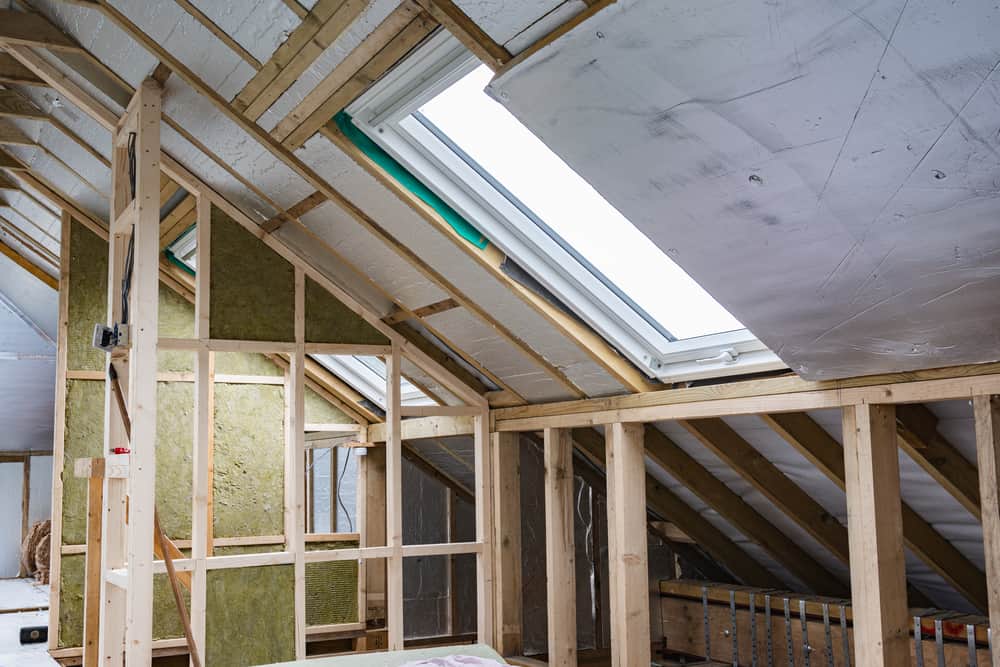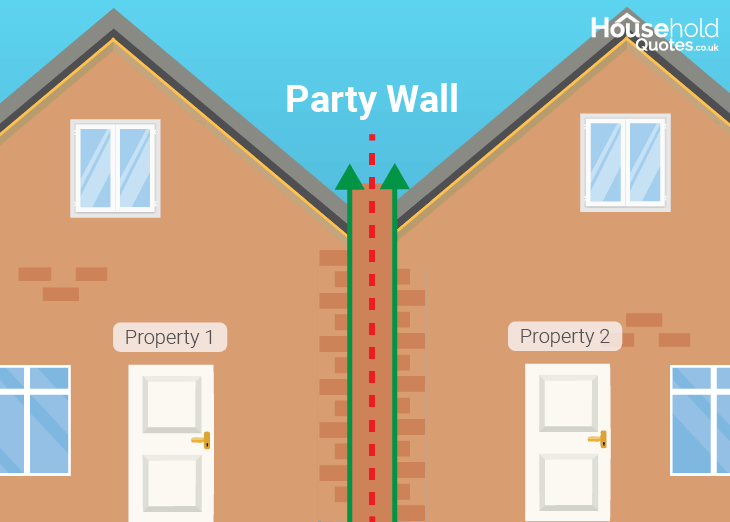
Tell us what you need to find a matching loft conversion specialist

Get free quotes from professionals near you

Compare offers and choose the one that best matches your need
- Householdquotes.co.uk
- Loft Conversion
- Regulations for Loft Conversions
Building Regulations for Loft Conversions in the UK


- Building regulations are mandatory for all loft conversions to ensure the safety and well-being of you and your home.
- Failure to adhere to building regulations can lead to an unlimited fine and enforced removal of your loft conversion.
- You need to submit a building application approval to your local authority, which will take no longer than five weeks to process.
- A structural engineer will provide the necessary calculations for your building application approval to ensure your loft conversion meets loft regulations.
- The cost of a building control application can vary between £650 and £1,600, depending on the complexity of your loft conversion.
Loft conversions have become increasingly popular since the start of 2020, and this trend is set to continue. With the additional space, you can create any room you desire - a home office, a new bedroom, or even a playroom for the kids.
However, converting your loft is a complex project that requires both time and money. From labour and supplies costs to choosing specific finishes and figuring out how to maximise usable space, a loft conversion is a significant undertaking.
One of the most important factors to consider is building regulations for loft conversions. While most loft conversions have authorised permitted planning, all lofts require building regulations.
Building regulations for loft conversions are in place to protect you and your family. Understanding loft conversion regulations can be tricky, as it can take time to determine what applies to your new build.
But don't worry! Our comprehensive guide covers all the necessary building regulations for your loft conversion, from fire safety to doors, windows, staircases, and insulation regulations.
- Describe your needs
- Get free quotes
- Choose the best offer
It only takes 30 seconds



- Building Regulations for Loft Conversions in the UK
- Do You Need to Follow Building Regulations For Your Loft Conversion?
- What are the Building Regulations for a Loft Conversion?
- Other Regulations for Loft Conversions
- How Can You Get Building Regulations Approved for Your Loft Conversion?
- How to Submit a Full Notice Building Regulation Application for Loft Conversions
- How Much Do Loft Conversion Building Regulations Cost?
- FAQ
Do You Need to Follow Building Regulations For Your Loft Conversion?
Loft conversions always require building regulations. Whether you opt for a dormer, Velux conversion, mansard or hip-to-gable, you are legally obligated to seek building regulation approval and follow the current building codes of 2025. Building codes are put in place to ensure safety and well-being within your new loft conversion.
It is essential to understand that planning permissions and building regulations are different. Planning permission approval authorises construction, whereas building regulations approval requires compliance with safety measures.
Many loft conversions fall within “permitted planning,” which states that construction can proceed without a planning permission application.
However, there are regulations you must follow to stay within the “permitted developed” for your loft conversion. Below are the rules you need to adhere to:
- You must use similar materials for the exterior of your home
- The size must not exceed 40 cubic metres for terraced and semi-detached homes
- Size must not exceed 50 cubic metres for detached homes
- It must not exceed the height of the existing house
- No verandas, balconies, or raised platforms are to be included
- Side-facing windows to be obscure-glazed
- Side-facing windows should be at least 1.7m from the ground
- A loft conversion doesn’t extend beyond the plane of the existing roof slope at the front of the house
- A roof extension must not overhang the outer wall of the original house
- A roof extension, with the exception of hip-to-gable extensions, must be set back at least 20cm from the original eaves.
- You are not doing a conservation area loft conversion.
For all countries in the UK, permitted planning and their regulations remain the same. However, building regulations for loft conversions differ slightly. It is essential to be aware of which building act applies to you as they are not set in stone and are regularly reviewed and updated:
- England and Wales: Buildings Act 1984
- Scotland: Buildings Act 2003
- Northern Ireland: Buildings Safety Act 2022
Is it Illegal to Ignore Building Regulations for Loft Conversions?
It is a criminal offence if you fail to align your loft conversion with building regulations. If you have been found to have started work or have finished without building regulation approval, the local authority can take several actions, including:
- Issuing an unlimited fine
- Enforcing the removal of your new loft conversion
Furthermore, non-compliance with building regulations for loft conversions may impact your ability to obtain home insurance, as the insurer will consider all faults within your home to have been preventable if building regulations were followed.
Selling your home may also be an issue without building regulation approval. Mortgage lenders will often only sign off on a house with a certificate of completion, which confirms that the building has followed building regulations.
Your local authority, which has the power to enforce building regulations are followed, can do one of three things if they suspect an “unlawful” build:
Your local authority, which has the power to enforce building regulations are followed, can do one of three things if they suspect an “unlawful” build:
-
No formal action taken: If a breach in building regulations is deemed a genuine mistake, your local authority may allow you to amend it. This is the quickest and most cost-effective action.
- Retrospective Building Application: If work has already started and you wish to regulate unregulated construction, you can apply for a retrospective building application.
- Issue an Enforcement Notice: This has been served by your local authority for your unregulated loft conversion. This notice states the local authority now has legal power to force you to remove or demolish your conversion.
However, this may result in an investigation into whether or not you intentionally hid the unlawful work and does not guarantee approval from your local authority.
Furthermore, the fees for this application are high. Your local council sets the fees, which differ from area to area.
For domestic dwellings, such as your home, the local authority has four years to implement one of the above. This is known as the “four-year rule”, which states that after four years, “unlawful” builds will be considered “lawful”.
However, you’re not off the hook after four years. You must obtain a “Certificate of Lawfulness,” which is a legal document that regulates unregulated construction and prevents enforcement notices.
A certificate of lawfulness will need to be required if you plan on selling your home in the future.
If it has been proven that you intentionally concealed your loft conversion to the local authority within those four years, you will not be granted a certificate of lawfulness.
As of 2025, the four-year rule is still in place. However, there are plans to scrap it and replace it with the ten-year rule. Currently, the ten-year rule applies to all unlawful builds but excludes private homes (dwellinghouses).
What are the Building Regulations for a Loft Conversion?

Building regulations for loft conversions are a set of standards established by local councils in the UK to ensure your safety, and those around your new build. By complying with these regulations, you can rest assured that your loft conversion is structurally sound and safe.
Additionally, these regulations prioritise energy conservation within loft conversions, which helps reduce energy bills and carbon emissions.
If you intend to use your loft only as a storage space, then your attic may be deemed as “non-habitable”. This means you are not required to follow the rigorous regulations applied to habitable loft conversions.
However, some rules apply to “non-habitable” lofts. These include:
- It must not appear to be habitable
- Must have minimum features and fixtures
- It must not have a permanent staircase. Only collapsible ladders are permitted.
Building regulations for loft conversions intended for use and occupancy have thorough rules that you must adhere to. By altering the structure of your roof and its contents, you must be sure that everything is safe to use once it has been completed.
Below, we discuss the most essential regulations you must know before and during your loft conversion.
Floor Joists

If you are planning to convert your loft into a livable space, it is vital to upgrade the flooring of your attic. Simply adding floor panels on top of the existing beams may seem like an easy solution, but it is insufficient.
Ceiling joists are not designed to handle the additional "imposed weight" created by your new room, new bathroom, and the furniture you plan to install.
Neglecting to reinforce your loft floor with floor joists can lead to floor sagging, which can cause an uneven floor and increase the risk of trips and falls. It can also indicate structural problems with your roof and loft room.
In addition, loft conversion regulations stipulate that for extensions such as a hip-to-gable conversion, which requires extensive work on the roof by altering the slope of the roof and changing it to a vertical gable wall, the walls, floors, and roof must be reinforced to handle the additional weight and changes.
Failure to reinforce and lead your new loft conversion to be structurally unsound. Building regulations for loft conversion specify that floor lofts must be:
- No more than 6mm apart
- Have 100mm of wool between them to reduce sound pollution
- The span of your floor joist depends on its size. The average size used in loft conversions is 47x147mm. This size must have a span of 2.89 metres to be within building codes.
- After installing joists, floor panels must be at least 14mm thick to help reduce noise insulation and strengthen your loft.
The cost of installing floor joists depends on their size and material. Timber is the most commonly used material in UK loft conversions. The average cost of installing timber floor joists for a standard conversion size of 30m2 is about £400. However, the price will increase accordingly if you have a larger area.
Steel floor joists, or RSJs, are longer-lasting, safer, and produce less noise than timber. However, they are more expensive. An RSJ beam 1 to 5 metres long will cost approximately £575, with insulation averaging around £500.
To ensure you meet building regulations for loft conversions and prevent floor sagging, a structural engineer can provide the necessary calculations to determine the size and thickness of your new loft floor.
Fire Safety Regulations
It is essential to adhere to strict fire safety regulations for the safety and well-being of your home. These regulations cover various aspects, including smoke alarms, fire doors, escape corridors and windows, as well as the use of sprinklers and fire-resistant materials.
Although these regulations can seem complex and may affect the design of your loft conversion, they exist to protect you from life-threatening injuries caused by house fires.
Thanks to updated building regulations for loft conversions and other construction types, the number of fires attended by emergency services in the UK has decreased by 50% over the last twenty years.
We have highlighted the fire-safety building regulations for your loft conversion below:
Smoke Alarms
As of 2023, there were 26,974 house fires, according to Helen Clarke, head of fire statistics at the Home Office. Many of which were a result of faulty smoke alarms. To comply with smoke alarm regulations, you should ensure that:
- It must be installed 30 cm away from a light fixture
- Must be placed within 7.5m of a habitable room such as a bedroom, office or playroom
- Must be interconnected to other pre-existing smoke alarms in your home
- It must be placed 30 cm away from a wall. Smoke alarms near walls will delay the detection of smoke
Escape Routes
Building regulations for loft conversions require a protected escape route from the loft to the ground floor, as often windows in loft conversions are not a suitable means of escape. Loft conversions regulations stipulate that:
- Escape routes must be unobstructed and easy to pass through during a fire
- Must be fire-resistant for at least 30 minutes
Building regulations for loft conversions deem your staircase and hallway as the “corridor of escape”. The use of fire-resistant materials such as plasterboard and adding a fire door to the bottom or top landing of the stairs will help further secure your corridor of escape.
Fire Doors
If a fire breaks out on the first or second floor of your home, using the corridor of escape could be risky. Therefore, installing fire doors becomes essential for your safety.
According to building regulations for loft conversions, all doors in your loft must be fire doors and should be fire-resistant for at least 20 minutes.
Additionally, you must seal your fire door frames using intumescent strips. When exposed to high temperatures, these strips seal the gap in the door frame and help to prevent the spread of smoke and fire to your loft.
Fire-Resistant Materials
To ensure safety, floors, beams, and walls must be fire-resistant for at least 30 minutes. Plasterboard and fire-proof paint/coating can achieve this.
If you're planning to add plasterboard to your walls and floors, please note that building regulations for loft conversions require the plasterboard to be at least 12.55mm thick to be effective.
Fire Sprinklers
Building regulations for loft conversions do not require adding a fire sprinkler system to your extension.
Nevertheless, we strongly recommend adding this feature as it provides an additional layer of protection in case of a fire. These systems can quickly extinguish fires before they can spread and cause significant damage.
Stairs Regulations
Having a staircase conversion is one of the final yet most crucial aspects of completing the project. With new loft stairs, you can comfortably move from your loft down to the next level.
Building regulations for loft conversions aim to ensure that the staircases are safe and don't cause injuries such as falls, slips, or trips. To prevent falls, ladders are not suitable for habitable loft conversions and would not be accepted.
If you are worried about space and cannot add standard straight loft stairs, you can opt for alternating tread staircases. These are loft conversion stairs for small landings, designed specifically for compact spaces. However, you must follow specific regulations to ensure your safety:
- Each tread must be slip-resistant
- Handrails on both sides must be installed
- Steps must be uniform with the parallel edge of the step (the nosing)
- There must be a minimum of 2 metres of headspace
- Treads must be between 220 mm to 300 mm over the broader part of the tread
The standard loft staircases' regulations are more detailed than those for alternating tread staircases. If you're planning to add a standard loft staircase, you must adhere to the following regulations:
- The minimum head height must be 2m. However, if you have a sloping roof, the head height
requirement is reduced to 1.8m, provided that the head height in the centre of the stairs is 1.9m
- The pitch or angle of the stairs must be equal to or less than 42 degrees
- The vertical part of the stairs (riser) should be a minimum of 150 mm and a maximum of 220 mm
- The vertical part of the stairs, known as the riser, should be a minimum of 150 mm and a maximum of 220 mm
- The horizontal part of the stairs (going) must be at least 200 mm and not more than 300 mm
- Must be fire-resistant for 30 minutes or more
- The width and length of a loft conversion stairs landing must equal to the smallest width of the narrowest flight of the staircase
- Handrails must be between 900mm to 1000mm high to ensure stability while using the stairs
Adhering to staircase regulations protects you from serious falls or injuries caused by unregulated staircases. In addition, they serve as an escape route in the event of a fire.
Insulation Regulations
It is estimated that you can lose up to one-quarter of your home’s heat through poor insulation in your loft roof, with an additional one-third of your heat potentially being lost through uninsulated walls.
Building regulations for loft conversions are designed to conserve fuel and energy, aiming to reduce heat loss in homes and energy bills.
As of 2025, loft conversion insulation must be at least 270mm. This includes walls, roofs and floors. Although the building codes do not specify the insulation material, it is advisable to choose materials that assist with ventilation to prevent damp and mould build-up in your new room.
According to the Energy Saving Trust, homes in England, Wales, and Scotland can save an average of £348 on energy bills if you upgrade from a 0 mm insulated home to a 270mm insulated home. In Northern Ireland, an average savings of £370 is possible.
Other Regulations for Loft Conversions
Although we have discussed some of the most essential building regulations, there are many other regulations that you must be aware of.
Building regulations are extensive and cover a wide range of health and safety concerns. Here are some of the additional factors that you and your team of experts should take into account.
Windows

All installed windows must meet the required thermal standards per the building regulations for loft conversions. This applies even if you are replacing old windows with new ones. Adhering to these standards will help increase the energy efficiency of your loft and prevent any unnecessary heat loss.
The thermal efficiency of windows is measured by their "U-value", which indicates the rate of heat loss or gain. A lower U-value is considered more effective.
To meet the standards, windows must have an energy rating of at least "B". In terms of U-value, windows should be 1.4W/m2K or lower.
Additionally, building regulations for loft conversions require that the roof must be able to bear the new weight of roof skylights, like Velux conversions.
If the roof light is located near a boundary, the fire performance of the roof light must also be taken into consideration.
Drainage
If you are planning to add a bathroom or if your gutters were damaged during your loft conversion and need to be replaced, it is essential to consider the building regulations for loft conversions regarding the removal of "foul water" and the transportation of rainwater.
When you add an ensuite to your loft, you will need a property drainage system that can transport the water, also known as foul water, from the shower, toilet, sink, bath, and bidet to the sewage system.
Removing this wastewater to avoid sickness is essential as it poses a high risk of transmitting bacteria and viruses that can cause various diseases.
Furthermore, building regulations for loft conversions state that if gutters were damaged during the conversion process, they must be replaced to ensure rainwater is carried to a sewage, soakaway, or infiltration system.
Gutters will help prevent water from getting into your loft, which can damage the brickwork, leading to cracks and an unsound home structure.
Electrics
Faulty electrical wires have the potential to overheat and cause an electrical fire. Shockingly, more than 8,000 fires in the UK yearly are caused by bad electrics, so it is crucial to comply with the loft conversion regulations for electrics.
The building regulations for loft conversions ensure that your new loft is sufficiently powered and prevents potential electrical fires.
It is important to note that depending on your home's current electricity, you may be required to rewire the entire house. The current wiring may not safely carry the additional loads that come with a loft conversion.
Remember, rewiring and doing loft electrics yourself is strictly prohibited. You must hire a certified electrician who can evaluate your wiring system and work on providing power to your loft conversion.
Walls and roofing
According to regulations, the loft conversion minimum height should be at least 2.2 metres. This height allows for insulation, the internal ceiling, and comfortable movement through the new loft conversion.
The walls and roof of your new loft must be a standard height of at least 2.2 metres according to loft conversion regulations. This allows space for insulation and the internal ceiling and provides comfort for you to easily move through the new loft conversion.
Building regulations for loft conversions in the UK specify that even small conversions, like a Velux extension, must meet this wall and roof height requirement. Your conversion must meet this height to be approved by your local authority.
However, you can still consider other loft conversion types, such as a dormer loft conversion, which will provide you with the necessary head height required for your conversion to proceed.
The roof height for loft conversions must not exceed 2.5 metres above the original boundary of your home. If this is unavoidable in your loft conversion plans, you are required to submit an application for planning permission.
Water Tanks
Many homes in the UK, particularly older ones, have a water tank in the attic, usually in the centre. While this arrangement may not be problematic for non-habitable lofts, it poses a space issue if you're considering converting your loft into a liveable room.
If you're faced with this scenario, the most straightforward solution would be to relocate the water tank to the corner of the loft, thus freeing up additional space for your conversion project.
However, it's crucial to note that loft conversion regulations specify that a water tank should have a minimum capacity of 212 litres.
Additionally, it should be watertight to prevent cross-contamination that may lead to illness. Furthermore, it should be covered to prevent insects or other animals from accessing the unit.
Party Wall Agreements

Loft conversion regulations state that terraced or semi-detached homes within England and Wales are legally required to apply for a party wall award. However, Scotland and Northern Ireland have no regulations regarding party walls.
The Party Wall Act of 1996 was established to prevent potential disputes between neighbours regarding shared boundaries such as a garden or loft wall.
Damages may occur during a loft conversion, and with a party wall agreement for a loft conversion, you and your neighbour can agree on the details of the work, including the scope, timeline, and cost.
If you fail to notify your neighbour of your plans, you can quickly and legally be stopped from proceeding with your loft conversion. Your neighbour can hire a solicitor and barrister to remove an injunction to halt your work until you serve an appropriate and valid Notice.
As a result, obtaining a party wall award is essential to avoid any legal issues.
How Can You Get Building Regulations Approved For Your Loft Conversion?
Getting building regulations approved for your loft conversion can initially seem complicated, but it's relatively straightforward if you have the right guidance and know where to look. Below is a step-by-step guide on how to get building regulations approved:
Choose a building control surveyor: Before you start the application process, you should work with a building control surveyor who can provide you with a detailed report of your home and information on potential defects. They can also advise you on repair, maintenance, and restoration options. They will help ensure that your new construction aligns with building regulations for loft conversions.
Submit your application: You must determine which application you need to apply for. Two types available - a full notice and building notice applications. Building notices are for small construction work or extensions and don't require detailed drawings to be submitted.
However, building regulations for loft conversions require you to apply for a full notice application, containing detailed architectural drawings, specifications, and relevant documents. You need to submit it to your local building control authority for review.
These applications must be thoroughly examined before being approved, and you can expect to hear back from your local authority within five weeks of submitting your application.
Get to work: Once your plans have been approved by your local authority, you can begin with your loft conversion! However, a building inspector will visit to check if the construction complies with building regulations for loft conversions.
Building surveyor visit: During this visit, the building inspector will check whether fire safety, insulation, structural elements such as floors, walls, and roofs, drainage, and staircases align with your area's building codes.
Completion certificate: Once the building inspector is satisfied that your new loft conversion meets the building regulations, they will provide you with a certificate of completion. Mortgage lenders and property insurers require this certificate.
While we have shown you the step-by-step process for getting building approval, it is essential to understand who you need to involve and what you need to provide when submitting a full notice application.
How to Submit a Full Notice Building Regulation Application for Loft Conversions

It is necessary to submit a full notice application to your local authority for loft conversions, per the building regulations. Loft conversions are deemed complex as they require adherence to various regulations to ensure structural soundness and safety, even for the most basic type of conversion, the Velux.
To ensure that the building regulation application for your loft conversions is successful, we would advise you to involve several professionals:
Structural Engineers
Structural engineers must examine your home's current structure and make detailed calculations to ensure that the work is carried out without damaging it or potentially harming those in and around the building. Their calculations must be provided for full notice applications.
Architects
Though employing an architect is not mandatory, it is advisable to do so to ensure a smooth application process. An architect can provide detailed drawings of your current home and the potential loft conversion for your submission of the full notice application.
They can work alongside structural engineers to produce the equations to secure building regulations for loft conversions. Furthermore, architects can assist you in redesigning the loft space if issues arise.
Approved Inspector
You can use an approved inspector before and during your loft conversion process. By using an approved inspector, you will not need to wait around for your local authority; instead, the inspector will notify them on your behalf.
Approved inspectors must be registered with the Construction Industry Council (CIC) to be acknowledged by your local authority as authentic.
An inspector will advise you on the building regulations for your loft conversion and provide information on the application process.
Furthermore, they will check proposals for compliance with building regulations, issue a plans certificate that confirms works are aligned with building regulations, inspect work as it progresses, and provide the final certificate once the work has been completed.
How Much Do Loft Conversion Building Regulations Cost?
The costs associated with building regulation applications and inspector fees depend on several factors, including the type of work proposed, the size of the conversion, and your location.
The cost generally ranges from £650 to £1,600, depending on the complexity of your project. Each local authority will have different fees, so it is important to discuss costs with them directly to avoid any confusion. Below we have broken down the average cost per country in the UK:
- England and Wales: The average cost to apply for building regulation for a loft conversion up to 50m2 is £191.00. For a building surveyor to check your build, it will cost £322.55
- Scotland: The cost of a building warrant is based on the estimated value of work. If your loft conversion costs £45,000, the cost of a building warrant is £719. Discounts are available if you use an approved inspector who can provide a certificate of approved design and construction. A project of this value could have a building warrant reduced to £80.00 if you use an approved inspector.
- Northern Ireland: On average, loft conversion planning fees will cost £97.20 with the inspection fee at £194.40.
FAQ
Yes, all types of loft conversions must adhere to building regulations. This ensures safety for you, your family, and your home’s surroundings.
If your loft conversion does not meet the building regulation standards, your local authority has four years to take action. However, after four years, your conversion can be deemed “lawful” if you apply for a certificate of lawfulness. This certificate indicates that your conversion is regulated and meets the necessary standards.
The minimum ceiling height required for loft conversions is 2.2 metres. It is important to maintain this height, as going below it will make it difficult to install insulation and move around comfortably in your loft.
If you think you may not meet this requirement, consider other types of loft conversions, such as dormer, hip-to-gable, or mansard, that will provide the necessary headspace.
Permitted development grants permission to construct loft conversions without requiring an application for planning permission.
However, this permission is subject to certain conditions, such as a maximum volume of 40 cubic metres for semi-detached homes and 50 cubic metres for detached homes, and the property must not be located on protected land.
If these conditions are not met, then submitting a planning permission application will be necessary.
Insulation is an essential requirement for loft conversion. The roof, walls, and floors should be insulated to a minimum of 270mm thick to prevent heat loss and lower energy bills.

Caoimhe is an experienced content writer and researcher who is passionate about providing accessible information to every reader. With a background in English literature and Sociology, she combines the two disciplines to create cohesive, well-thought-out, and well-informed pieces.
- Building Regulations for Loft Conversions in the UK
- Do You Need to Follow Building Regulations For Your Loft Conversion?
- What are the Building Regulations for a Loft Conversion?
- Other Regulations for Loft Conversions
- How Can You Get Building Regulations Approved for Your Loft Conversion?
- How to Submit a Full Notice Building Regulation Application for Loft Conversions
- How Much Do Loft Conversion Building Regulations Cost?
- FAQ
